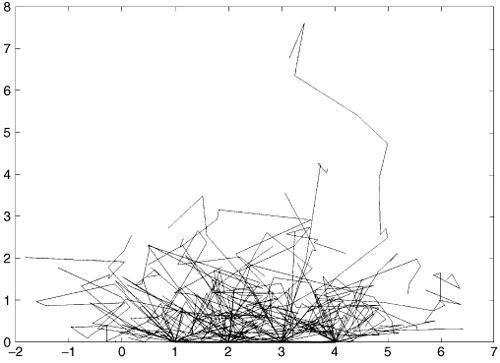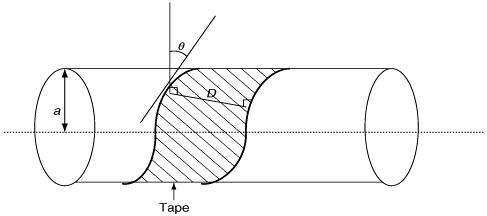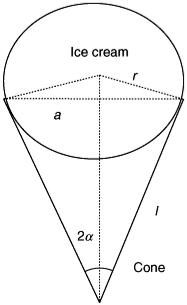
- •Preface
- •1.1 Introduction
- •1.2 Models and modelling
- •1.3 The learning process for mathematical modelling
- •Summary
- •Aims and objectives
- •2.1 Introduction
- •2.2 Examples
- •2.3 Further examples
- •Appendix 1
- •Appendix 2
- •Aims and objectives
- •3.1 Introduction
- •3.2 Definitions and terminology
- •3.3 Methodology and modelling flow chart
- •3.4 The methodology in practice
- •Background to the problem
- •Summary
- •Aims and objectives
- •4.1 Introduction
- •4.2 Listing factors
- •4.3 Making assumptions
- •4.4 Types of behaviour
- •4.5 Translating into mathematics
- •4.6 Choosing mathematical functions
- •Case 1
- •Case 2
- •Case 3
- •4.7 Relative sizes of terms
- •4.8 Units
- •4.9 Dimensions
- •4.10 Dimensional analysis
- •Summary
- •Aims and objectives
- •5.1 Introduction
- •5.2 First-order linear difference equations
- •5.3 Tending to a limit
- •5.4 More than one variable
- •5.5 Matrix models
- •5.6 Non-linear models and chaos
- •5.7 Using spreadsheets
- •Aims and objectives
- •6.1 Introduction
- •6.2 First order, one variable
- •6.3 Second order, one variable
- •6.4 Second order, two variables (uncoupled)
- •6.5 Simultaneous coupled differential equations
- •Summary
- •Aims and objectives
- •7.1 Introduction
- •7.2 Modelling random variables
- •7.3 Generating random numbers
- •7.4 Simulations
- •7.5 Using simulation models
- •7.6 Packages and simulation languages
- •Summary
- •Aims and objectives
- •8.1 Introduction
- •8.2 Data collection
- •8.3 Empirical models
- •8.4 Estimating parameters
- •8.5 Errors and accuracy
- •8.6 Testing models
- •Summary
- •Aims and objectives
- •9.1 Introduction
- •9.2 Driving speeds
- •Context
- •Problem statement
- •Formulate a mathematical model
- •Rewritten problem statement
- •Obtain the mathematical solution
- •9.3 Tax on cigarette smoking
- •Context
- •Problem statement
- •Formulate a mathematical model
- •Obtain the mathematical solution
- •9.4 Shopping trips
- •Context
- •Problem statement
- •Formulate a mathematical model
- •Obtain the mathematical solution
- •Interpret the mathematical solution
- •Using the model
- •9.5 Disk pressing
- •Context
- •Problem statement
- •Formulate a mathematical model
- •Obtain the mathematical solution
- •Interpret the mathematical solution
- •Further thoughts
- •9.6 Gutter
- •Context and problem statement
- •Formulate a mathematical model
- •Obtain the mathematical solution
- •9.7 Turf
- •Context
- •Problem statement
- •Formulate a mathematical model
- •Obtain the mathematical solution
- •Interpret the solution
- •9.8 Parachute jump
- •Context and problem statement
- •Formulate a mathematical model
- •Obtain the mathematical solution
- •9.9 On the buses
- •Context
- •Problem statement
- •Formulate a mathematical model
- •Obtain the mathematical solution
- •9.10 Further battles
- •Discrete deterministic model
- •Discrete stochastic model
- •Comparing the models
- •9.11 Snooker
- •Context
- •Problem statement
- •Formulate a mathematical model
- •Obtain the mathematical solution
- •Interpret the mathematical solution
- •9.12 Further models
- •Mileage
- •Heads or tails
- •Picture hanging
- •Motorway
- •Vehicle-merging delay at a junction
- •Family names
- •Estimating animal populations
- •Simulation of population growth
- •Needle crystals
- •Car parking
- •Overhead projector
- •Sheep farming
- •Aims and objectives
- •10.1 Introduction
- •10.2 Report writing
- •Preliminary
- •Main body
- •Appendices
- •Summary
- •General remarks
- •10.3 A specimen report
- •Contents
- •1 PRELIMINARY SECTIONS
- •1.1 Summary and conclusions
- •1.2 Glossary
- •2 MAIN SECTIONS
- •2.1 Problem statement
- •2.2 Assumptions
- •2.3 Individual testing
- •2.4 Single-stage procedure
- •2.5 Two-stage procedure
- •2.6 Results
- •2.7 Regular section procedures
- •2.8 Conclusions
- •3 APPENDICES
- •3.1 Possible extensions
- •3.2 Mathematical analysis
- •10.4 Presentation
- •Preparation
- •Giving the presentation
- •Bibliography
- •Solutions to Exercises
- •Chapter 2
- •Example 2.2 – Double wiper overlap problem
- •Chapter 4
- •Chapter 5
- •Chapter 6
- •Chapter 8
- •Index

Figure 2.32
2.3 Further examples
Example 2.13 Investment
When a sum of money is invested in a building society, it gains interest at a certain rate. Usually, for small savings accounts, you want to pay in money from time to time as and when you have money available. Also you will want to withdraw cash for a particular purpose – perhaps to pay for an annual holiday. This means that the calculation of the amount currently held in your account depends not only on the dates of deposits and withdrawals but also on how the interest is worked out. The interest rate often varies as well, just to complicate matters.
Formulate a mathematical model which will tell you how much is in your account at any given time. (Take the calculation of interest as compounded each month and decide, for example, that any deposits only gain interest from the start of the next month after being invested.)
Consider the ‘reverse’ problem of needing to save a certain amount by 12 months’ time for particular use. How much must you invest each month?
Example 2.14 Ladders
There is a conservatory behind your house which sticks out into the garden by 2 m. The conservatory roof is flat and is 3 m above ground level. Above the conservatory at firstand second-floor level are bedroom windows to be cleaned. The conservatory runs for the whole width of the property.
The window cleaner attempts to place his ladder against the house wall, resting on the ground and passing over the conservatory. He does not have many ladders to choose from but starts with a ladder of 6 m in length after extending it. Can this ladder reach over the conservatory and touch the house

wall? If so, what height does it reach up the wall? What is the minimum ladder length that can just pass over the conservatory and still rest against the house?
Example 2.15
Art gallery security
A small art gallery has a security problem and decides to dispense with attendants on duty ‘on the floor of the gallery’ and instead to install a television eye system in which cameras pan over the area of the gallery. The resulting pictures are then watched from a remote control room. At the gallery entrance, an attendant checks tickets whilst at the exit another gives a cursory check of people as they leave. The current exhibition is that of a collection of small highly valuable water-colours. The layout of the gallery is shown in Figure 2.33. The management decide to make do with two television cameras as shown.
Figure 2.33
There is a water-colour placed every metre around the walls of the gallery without any gaps. The television cameras give at any instant a ‘scan beam’ of 30°. They rotate backwards and forwards over the field of vision, taking 20 s to complete one cycle. In the control room the attendant looks at the television pictures 50% of the time since he has other jobs to do. Analyse the success of this system. How many water-colours are under surveillance at a particular instant? Calculate the relation between ‘time’ and ‘number of water-colours’ throughout one camera cycle. Suppose a thief tries to steal a water-colour – what are his chances of escaping television detection? What happens if the rotation speed of the cameras is changed?
Example 2.16 Pyramid selling
‘Pyramid’ selling of household articles through gatherings of buyers and sellers at people's houses is quite a well-known marketing technique. For example, a range of plastic tableware (plates, cereal bowls, etc.) are often sold in this way at so-called Tupperware parties. The principal features of pyramid selling are as follows.
The Tupperware agent in the district calls a party to which a number of people come. They pay a ‘joining fee’ on arrival. The Tupperware agent then demonstrates the qualities of the particular items currently on sale and sells some to those present. The Tupperware agent then invites each guest to become a subagent and to organise their own parties in their own houses to which they will invite new sets of people. When such further parties take place, the subagents behave similarly, i.e. they sell the

tableware and tell each guest to become an agent. This process then continues over more ‘levels’ as appropriate, thus creating a pyramid of ‘members’. The whole system can start again with a different product and be repeated.
Can you formulate the pyramid selling situation into a mathematical model? Remember that each subagent pays a certain percentage of profit back to the agent one level higher up in the pyramid.
Suppose, for simplicity, that one particular Tupperware article is sold. Suppose that each member buys the same quantity of goods.
Develop the model to deal with a variable number of articles sold. What happens if the number of people at the parties varies? How many ‘levels’ of the pyramid are feasible? What happens if some of (or all) the guests are agents from a higher level?
Example 2.17 Lift/elevator system
A university has a lift system to carry students and staff to the floor that they work in. Currently in a particular block there are two adjacent lifts which give access to any of eight floors starting from the ground floor
(floor 0). This causes great aggravation at busy early morning times when both lifts seem to be stuck at around floor four before slowly descending stopping at each floor level on the way. A suggestion is made that one of the lifts should be programmed to serve only floors six to eight, whilst the other still operates over all floors. Investigate this strategy. Do this by collecting data on early morning demand at your own site. Evaluate how long it takes for a lift to travel from one floor to another. Remember that new customers arrive according to some random process and not all want to go to floor eight.
Example 2.18 Bandage
The first-aiders course is running at the university. One of the items concerns how to bandage a limb after an injury or cut has occurred. The bandages used are taken from spools of cloth of certain widths. The amount required for a particular person's injury will depend not only on the seriousness of the wound, but also on the diameter of the injured limb, i.e. this might be a finger but could be a thigh. There is also the question of how much overlap to include in a given bandage wrap. The organisers of the first-aid course would like to know how much bandage is typically needed.
Figure 2.34
A tape of width D cm is wrapped around a cylindrical ‘limb’ of radius a cm so that the tape just covers

the limb with no overlap to have a resulting ‘pitch’ angle θ (Figure 2.34). Obtain the equation relating D, a and θ.
How does this relationship vary when the first-aiders require an overlap of w cm? Example 2.19
Ice-cream cornet
Canio's Ice-Cream company is examining its ice-cream sales and find that the standard cornet is as popular as ever. It decides that the amount of ice cream per cornet should be regularised and also that the size and shape of the conical biscuit holder should be specified. The preferred arrangement is shown in Figure 2.35.
It is decided that for a standard cornet, the amount of ice cream (spherical in scoop shape) must just fit at the top of the cone when served, and that the cone size should just exactly contain all the ice cream as it is left to melt.
Formulate relations connecting r, l, a and α and obtain the value of the cone angle α.
Figure 2.35
Example 2.20 Second-hand car
Sculleys are offering good deals on second-hand cars. It has schemes for monthly repayments over 30and 42-month periods at given rates of interest. A deposit is normally required before ‘terms’ are then set up to cover the financing of the remainder of the amount owed. The problem for the customer, apart from finding money for the monthly repayments, is that the value of the car will depreciate as time goes by. In order to plan ahead for another car purchase, probaly but not necessarily at the end of the payment period, it is prudent to save on a monthly basis in a ‘savings’ account. The plan may be to save sufficient to cover at least a new deposit (to add to the re-sale value of the old car) so that next time the amount borrowed will be less than the first time.
Set up a financial model for the second-hand car purchase situation to show the month-by-month state of the finance and also the declining value of the car as it depreciates. The model must also include the outcome from the savings account. The ‘state’ of the finance should be summarised every six months.
Take typical data on a popular small car such as a Vauxhall Astra. Example 2.21
Conifer
A plantation of conifer trees has a 10-year cycle over which period trees are either cut down for sale or left to mature. After 10 years’ growth a tree has matured and subsequently if left in the ground does not increase in value beyond that after 10 years.
The demand for trees (such as for Christmas trees) means that many are cut and sold well before they reach the age of 10. Each spring new saplings are planted to replace those cut down at the end of the previous year so a constant number of trees is maintained. Investigate the strategy for cutting and selling.
